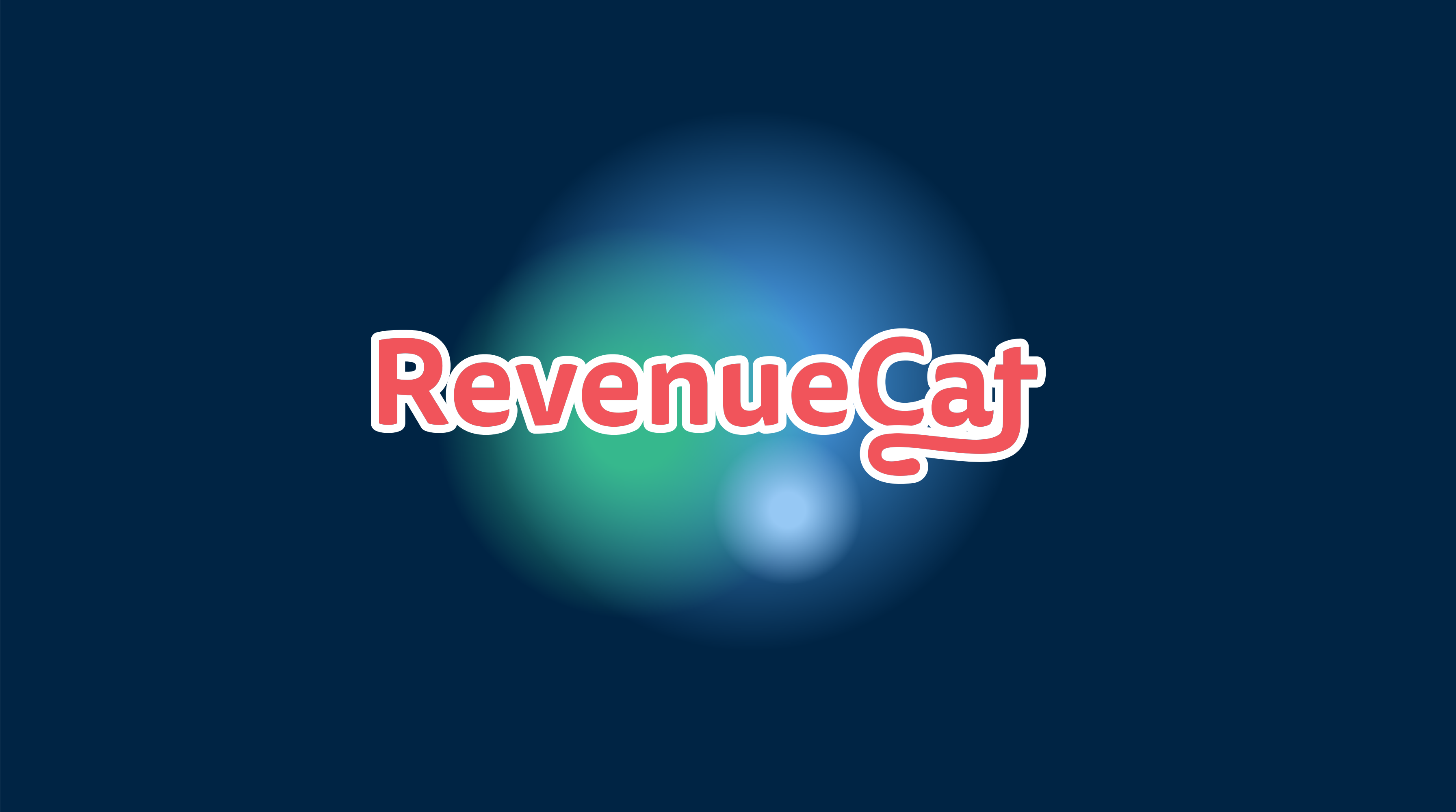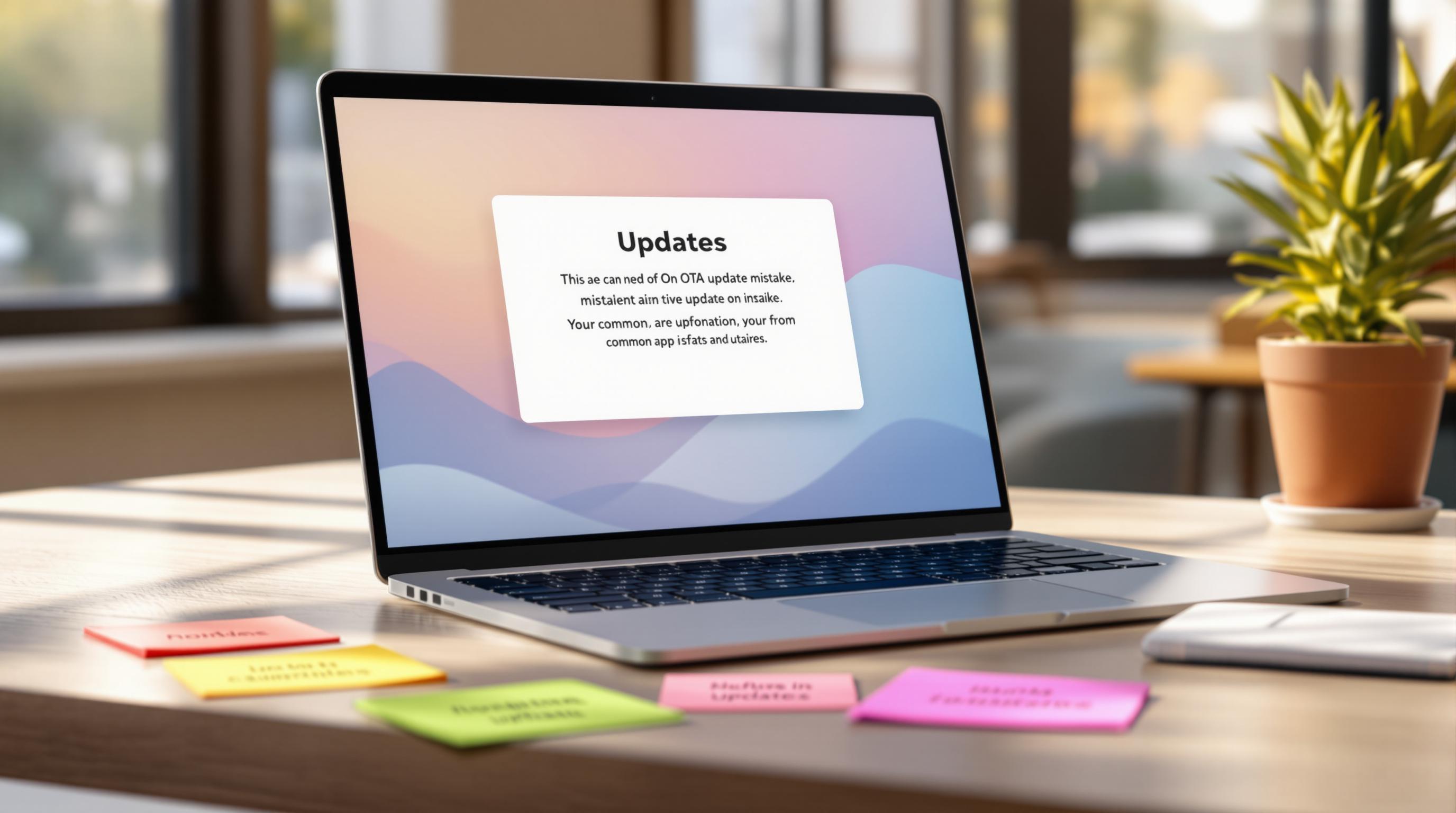이 플러그인은 이제 RevenueCat 공식 저장소로 이전되었습니다. 자세한 내용은 공식 문서를 참조하세요.
Capacitor Purchases는 iOS와 Android에서 인앱 구매를 가능하게 하는 Capacitor 프레임워크용 플러그인입니다. 여러 플랫폼에서 일관된 간단한 API를 제공하여 개발자가 모바일 앱에서 인앱 구독과 구매를 쉽게 구현할 수 있도록 합니다.
Capacitor Purchases 플러그인의 주요 특징 중 하나는 인앱 구독과 인앱 구매를 위한 도구를 제공하는 플랫폼인 RevenueCat과의 통합입니다. RevenueCat은 여러 플랫폼에서 간단하고 일관된 API를 제공하고 영수증 검증 및 사용자 관리와 같은 작업을 자동화하여 인앱 구독과 구매 구현 과정을 단순화합니다.
RevenueCat을 사용하면 개발자는 구독을 쉽게 관리하고, 수익을 추적하며, 기타 관련 작업을 수행할 수 있습니다. RevenueCat이 제공하는 일부 기능은 다음과 같습니다:
- 자동화된 영수증 검증
- 사용자 관리
- 맞춤형 가격 모델 지원
- 상세 분석
- 확장성
Capacitor Purchases 플러그인과 RevenueCat을 사용함으로써 개발자는 모바일 앱에서 인앱 구독과 구매를 구현할 때 시간과 노력을 절약할 수 있으며, 사용자 경험을 향상시키고 수익을 증가시키는 데 도움이 되는 추가 기능을 제공할 수 있습니다.
Capacitor Purchases 플러그인과 RevenueCat을 사용하면 개발자는 여러 플랫폼에서 인앱 구독과 구매를 쉽게 관리하고 추적하며, 영수증을 검증하고 사용자를 관리할 수 있습니다. 또한 맞춤형 가격 모델을 만들고 성과와 수익을 개선하기 위한 상세 분석을 얻을 수 있습니다.
설치
Capacitor와 Capacitor Purchases 플러그인의 최신 버전을 사용하시기 바랍니다. Capacitor 웹사이트에서 Capacitor와 Capacitor Purchases 플러그인의 최신 버전을 확인할 수 있습니다.
Capacitor Purchases 플러그인을 설치하려면 다음 명령어를 실행하세요:
npm i @capgo/capacitor-purchases
앱의 네이티브 코드에 플러그인을 추가하세요
npx cap sync
Xcode에서 인앱 구매 기능을 추가하세요:
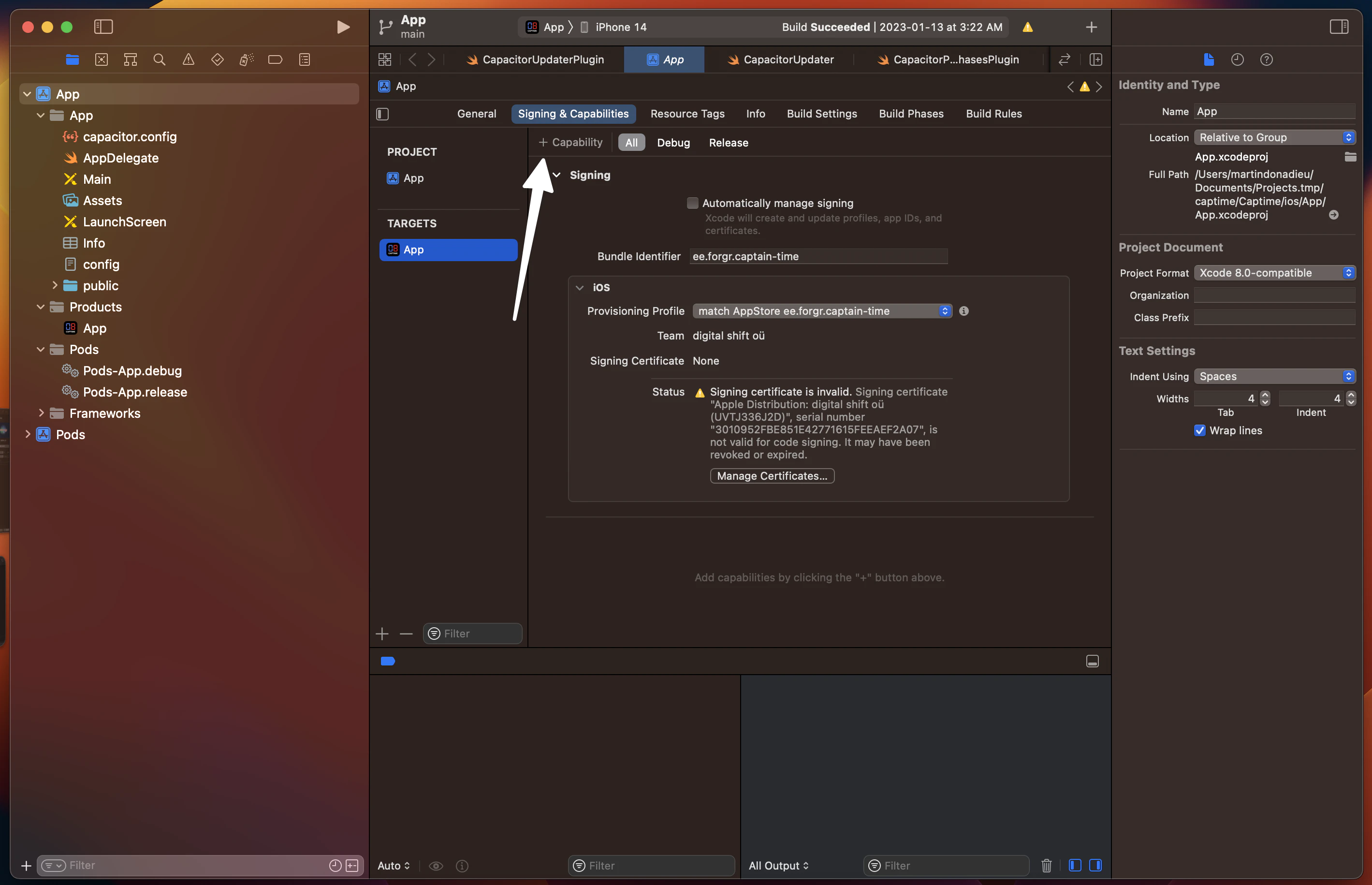
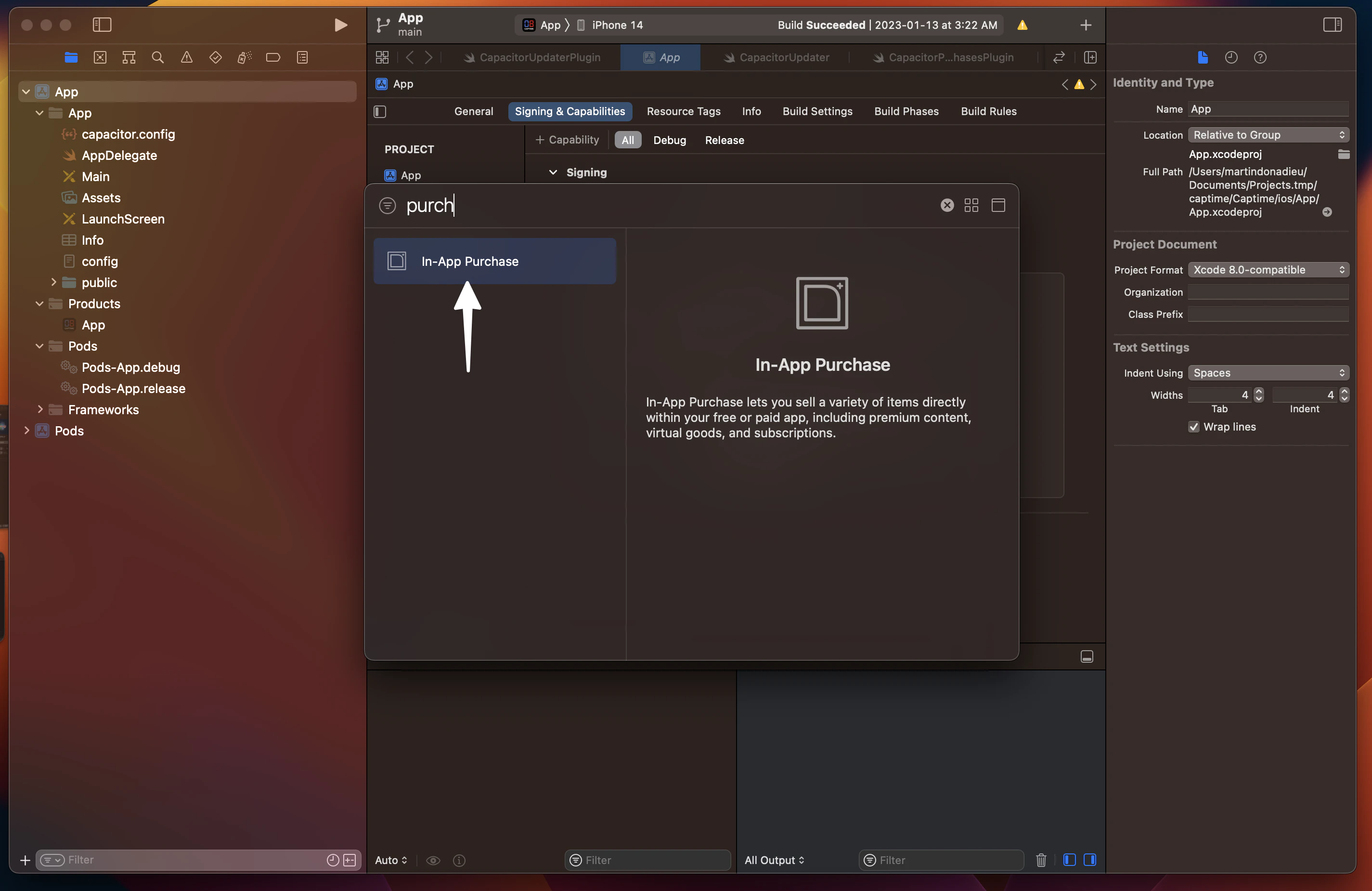
1. RevenueCat 계정 만들기
이 가이드는 몇 줄의 코드만으로 구독과 RevenueCat SDK를 시작하고 실행하는 방법을 안내합니다.
여기에서 새로운 RevenueCat 계정에 가입하세요.
📘
💡 팁!
RevenueCat은 각 앱/프로젝트마다 별도의 RevenueCat 계정을 만들것을 권장합니다. 특히 앱을 판매할 계획이 있다면 더욱 그렇습니다. 전체 계정을 이전할 수 있어 RevenueCat 지원팀에 개별 프로젝트 이전을 요청하고 기다릴 필요가 없어 이전 과정이 빨라집니다.
조직/기업
RevenueCat에 등록하고 프로젝트 내에서 앱을 설정할 때 회사 계정을 사용하는 것을 권장합니다. 프로젝트에 팀의 나머지 멤버를 협력자로 초대할 수 있지만, 프로젝트 소유자만 결제를 관리할 수 있습니다. 프로젝트 협력자는 결제 세부 정보를 관리할 수 없습니다.
2. 프로젝트 및 앱 구성
▶️ 프로젝트 생성
RevenueCat 대시보드로 이동하여 상단 탐색 메뉴의 Projects 드롭다운에서 새 프로젝트 추가를 선택하세요.
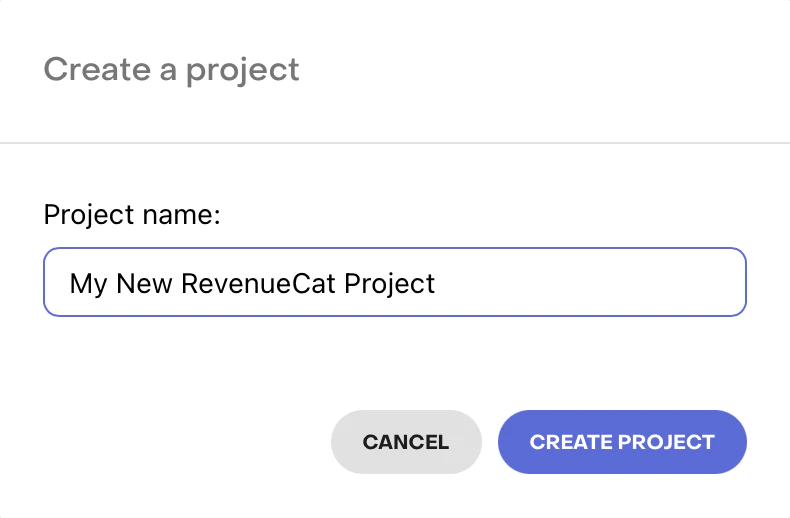
새 프로젝트 생성을 위한 팝업 모달
▶️ 앱/플랫폼 추가
프로젝트 대시보드의 왼쪽 메뉴에서 Project Settings > Apps로 이동하여 추가할 앱의 플랫폼을 선택하세요.
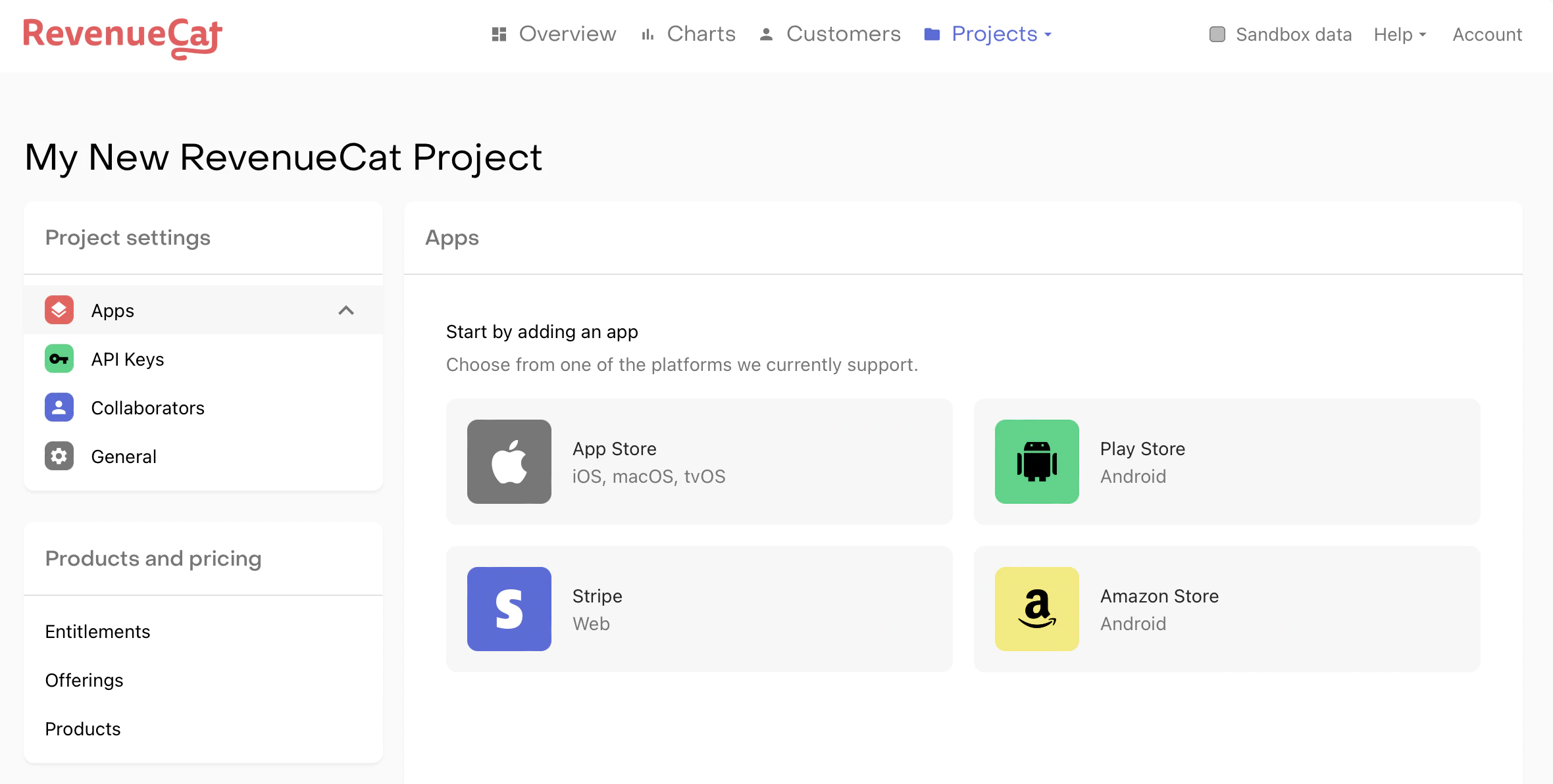
앱 플랫폼 선택을 위한 프로젝트 대시보드
앱 이름 필드는 RevenueCat에 앱을 추가하는데 필수입니다. 나머지 구성 필드는 나중에 추가할 수 있습니다. 테스트 및 프로덕션 구매를 하려면 번들 ID(iOS)/패키지 이름(Android)과 공유 시크릿(iOS)/서비스 자격 증명(Android)이 구성되어야 합니다.
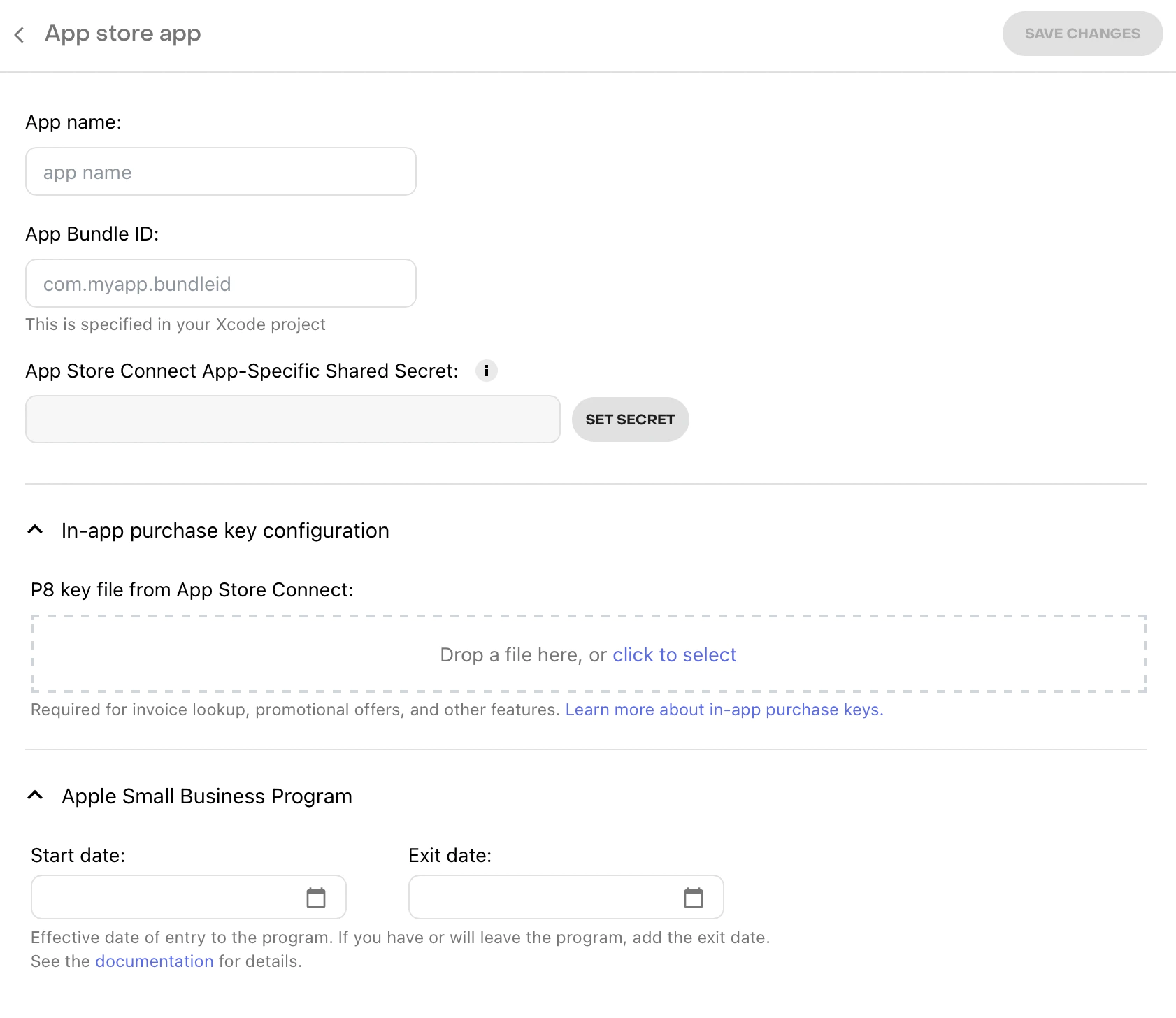
Apple App Store 앱을 위한 앱 구성 페이지
📘
💡 팁!
앱을 등록한 후 RevenueCat은 플랫폼 서버 알림 설정을 권장합니다. 이러한 알림은 필수는 아니지만 웹훅 및 통합 전달 시간을 단축하고 구독자 업데이트의 지연 시간을 줄여줍니다.
📘
스테이징 vs. 프로덕션 앱 및 사용자
RevenueCat 자체는 스테이징과 프로덕션을 위한 별도의 환경이 없습니다. 대신 사용자의 기본 거래는 샌드박스와 프로덕션으로 구분됩니다.
모든 RevenueCat 앱은 스토어에서 샌드박스와 프로덕션 구매를 모두 할 수 있습니다. 스테이징과 프로덕션을 위한 별도의 앱이 있는 경우 설정을 미러링하기 위해 RevenueCat에서 여러 프로젝트를 만들 수 있습니다.
또한 사용자도 환경별로 분리되지 않습니다. 동일한 사용자가 동시에 활성 샌드박스 구매와 활성 프로덕션 구매를 가질 수 있습니다.
▶️ 서비스 자격 증명
RevenueCat이 앱 스토어와 귀하를 대신하여 통신할 수 있도록 서비스 자격 증명을 설정해야 합니다. 자세한 내용은 RevenueCat의 App Store Connect 공유 시크릿, Play 서비스 자격 증명, Amazon Appstore 공유 시크릿 가이드를 참조하세요.
Play 서비스 자격 증명은 Google 서버 전체에 전파되는 데 최대 36시간이 걸릴 수 있습니다.
3. 상품 구성
▶️ 스토어 설정
RevenueCat을 사용하여 상품을 가져오기 전에 각 스토어에서 상품을 구성해야 합니다. 이 과정을 안내하는 App Store Connect, Google Play Console, Amazon Appstore, Stripe 가이드를 참조하세요.
iOS 상품을 판매하는 경우 App Store Connect > Agreements, Tax, and Banking에서 ‘유료 애플리케이션 계약’에 서명하고 은행 및 세금 정보를 작성해야 합니다. 구매를 테스트하기 전에 이 작업을 완료해야 합니다.
📘
테스트하는 동안 스토어 설정을 건너뛰고 싶으신가요?
iOS에서는 StoreKit 구성 파일을 대신 테스트하여 App Store Connect에서 상품 구성을 지연할 수 있습니다. 이러한 구성 파일은 최소한의 설정만 필요하며 Xcode에서 직접 구성할 수 있습니다.
StoreKit 구성 파일 설정에 대한 자세한 내용은 RevenueCat의 샌드박스 테스트 가이드를 참조하세요.
▶️ RevenueCat에서 상품 및 자격 구성
App Store Connect, Google Play Console, Amazon Appstore, Stripe에서 인앱 상품이 구성되면 해당 구성을 RevenueCat 대시보드에 복사해야 합니다. RevenueCat은 프리미엄 기능에 대한 접근을 제어하기 위한 자격 시스템과 고객에게 제공하는 상품 세트를 관리하기 위한 제안을 사용합니다.
자격은 특정 상품을 구매한 후 고객이 “권한을 가지게 되는” 접근 수준입니다. 제안은 결제 화면에서 “제공”하고자 하는 인앱 상품을 구성하고 원격으로 관리할 수 있는 간단한 방법입니다. RevenueCat은 코드를 단순화하고 앱 업데이트 없이 상품을 변경할 수 있도록 이러한 기능을 활용하는 것을 권장합니다.
상품을 설정한 다음 제안이나 자격으로 구성하는 방법은 상품 구성을 참조하세요.
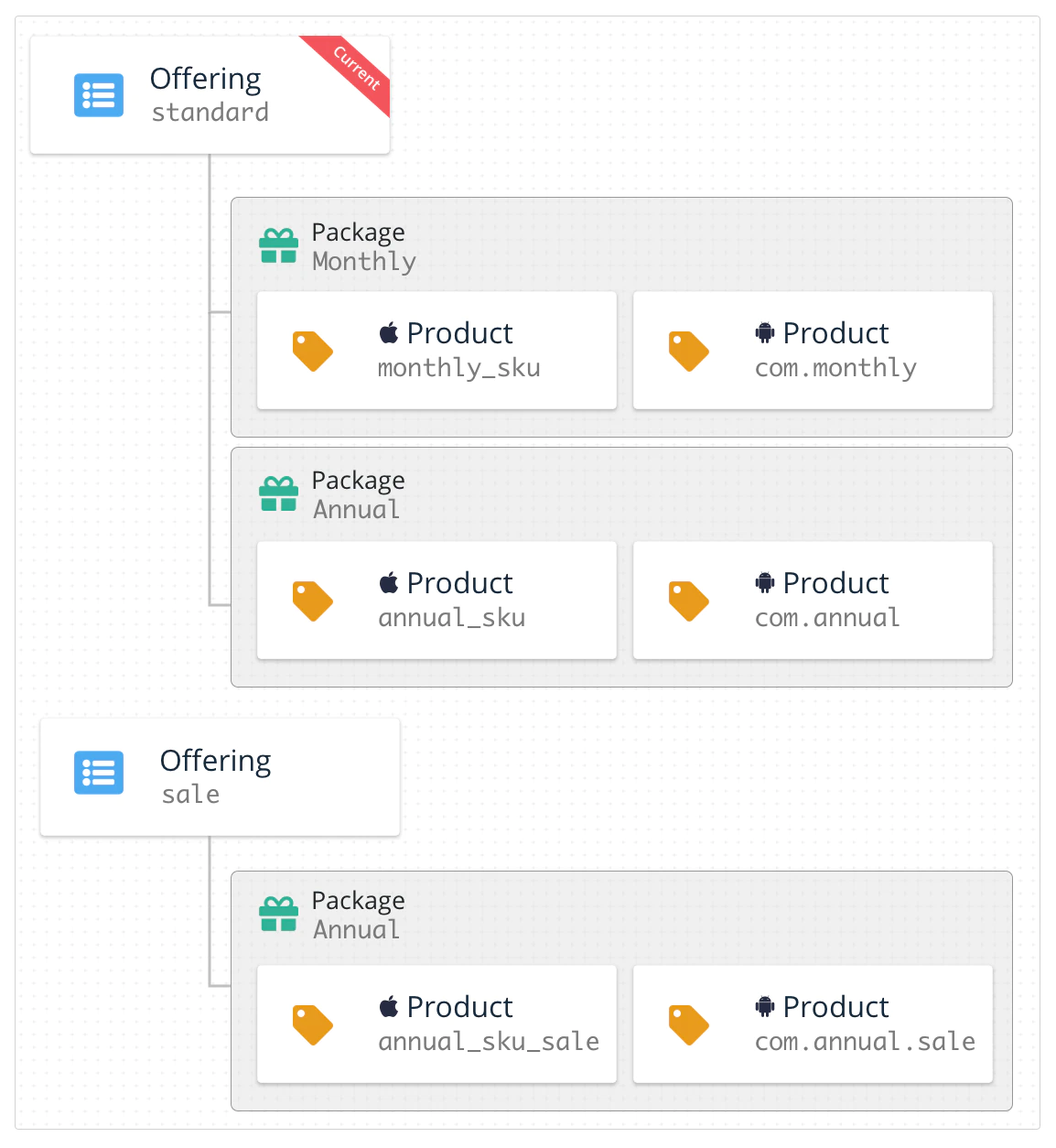
4. RevenueCat의 Purchases SDK 사용하기
RevenueCat SDK는 토큰을 RevenueCat 서버와 동기화하면서 플랫폼 전반에 걸쳐 구매와 구독을 원활하게 구현합니다.
SDK에 문제가 발생하면 SDK 문제 해결에서 안내를 참조하세요.
📘
Purchases를 구성할 때는 공개 SDK 키만 사용하세요
대시보드의 Project settings 아래 API keys 탭에서 공개 SDK 키를 얻을 수 있습니다.
_Purchases_의 공유 인스턴스는 보통 앱 실행 시 한 번만 구성해야 합니다. 이후에는 SDK에서 .shared 인스턴스에 접근하여 앱 전체에서 동일한 인스턴스가 공유됩니다.
SDK는 자동으로 구성된 Offerings를 가져오고 Apple, Google 또는 Amazon에서 제품 정보를 검색합니다. 따라서 고객이 구매 화면을 실행할 때 사용 가능한 제품이 이미 로드되어 있을 것입니다.
다음은 Offerings를 가져오는 예시입니다. Offerings를 사용하여 페이월 화면을 구성할 수 있습니다. 자세한 정보와 모범 사례는 RevenueCat의 제품 표시 가이드를 참조하세요.
▶️ 사용 가능한 제품 가져오기 및 표시
📘
사용자 ID로 Purchases 구성하기
앱에 사용자 인증 시스템이 있는 경우, 구성 시점에 사용자 식별자를 제공하거나 나중에
.logIn()호출로 제공할 수 있습니다. 자세한 내용은 RevenueCat의 사용자 식별 가이드를 확인하세요.
SDK는 자동으로 구성된 Offerings를 가져오고 Apple, Google 또는 Amazon에서 제품 정보를 검색합니다. 따라서 고객이 구매 화면을 실행할 때 사용 가능한 제품이 이미 로드되어 있을 것입니다.
다음은 Offerings를 가져오는 예시입니다. Offerings를 사용하여 페이월 화면을 구성할 수 있습니다. 자세한 정보와 모범 사례는 RevenueCat의 제품 표시 가이드를 참조하세요.
import { CapacitorPurchases } from '@capgo/capacitor-purchases'import { isPlatform } from '@ionic/vue' // use the right one for your framework
CapacitorPurchases.setDebugLogsEnabled({ enabled: import.meta.env.DEV }) // Enable to get debug logs in dev modeif (isPlatform('ios')) { CapacitorPurchases.setup({ apiKey:'appl_******'})} else if (isPlatform('android')) { CapacitorPurchases.setup({ apiKey:'goog_******'})}Offerings, 제품 또는 사용 가능한 패키지를 가져올 때 비어있다면, 해당 스토어의 구성 문제 때문입니다.
App Store Connect에서 가장 흔한 원인은 ‘유료 애플리케이션 계약’이 만료되었거나 제품이 ‘제출 준비’ 상태가 아닌 경우입니다. GooglePlay에서는 주로 앱이 비공개 트랙에 게시되지 않았거나 유효한 테스트 사용자가 추가되지 않은 경우에 발생합니다.
이 문제 해결에 대한 자세한 정보는 RevenueCat 고객 지원 센터에서 찾을 수 있습니다.
▶️ 구매하기
SDK에는 구매를 용이하게 하는 간단한 메서드가 포함되어 있습니다. purchase:package는 가져온 Offering에서 패키지를 가져와 해당 앱 스토어와 거래를 처리합니다.
아래 코드 예시는 패키지를 구매하고 “your_entitlement_id” 콘텐츠의 잠금이 해제되었는지 확인하는 과정을 보여줍니다. purchase:package 메서드에 대한 자세한 내용은 RevenueCat의 구매하기 가이드에서 확인할 수 있습니다.
const { offerings } = await CapacitorPurchases.getOfferings()if (offerings.current !== null) { // Display current offering with offerings.current}▶️ 구독 상태 확인
앱의 수명 주기 동안 최신 상태를 확인해야 할 때마다 이 메서드를 사용할 수 있으며, 반복적으로 호출해도 안전합니다. _Purchases_는 업데이트될 때마다 최신 CustomerInfo를 자동으로 캐시하므로 대부분의 경우 이 메서드는 캐시에서 데이터를 가져와 매우 빠르게 실행됩니다.
사용자에게 어떤 UI를 보여줄지 결정할 때와 사용자가 특정 자격 수준이 필요한 작업을 수행할 때마다 이 메서드를 호출하는 것이 일반적입니다.
📘
💡 유용한 팁!
구독이 활성화되어 있는지 여부 외에도 더 많은 정보에 접근할 수 있습니다. 구독이 갱신될 예정인지, 사용자의 신용카드에 문제가 감지되었는지 등을 알아보려면 RevenueCat의 구독 상태 가이드를 참조하세요.
RevenueCat을 사용하면 사용자가 인앱 구매를 복원하여 동일한 스토어 계정(Apple, Google 또는 Amazon 계정)에서 이전에 구매한 콘텐츠를 다시 활성화할 수 있습니다. 모든 앱에 사용자가 복원 메서드를 실행할 수 있는 방법을 제공하는 것을 권장합니다. Apple은 사용자가 구매에 대한 접근 권한을 잃은 경우(예: 앱 제거/재설치, 계정 정보 분실 등) 복원 메커니즘을 필수로 요구합니다.
const purchase = async (p: Package): Promise<PurchaserInfo | null> => { try { // console.log('purchase', p) const data = await CapacitorPurchases.purchasePackage({ identifier: p.identifier, offeringIdentifier: p.offeringIdentifier, }) const purchaserInfo = data.purchaserInfo // console.log('listenBuy', purchaserInfo) if (purchaserInfo.activeSubscriptions.includes(p.identifier)) { // set the user as paid } return purchaserInfo } catch (e) { console.error('listenBuy error', e) } return null}두 개의 서로 다른 App User ID가 동일한 기본 스토어 계정(Apple, Google 또는 Amazon 계정)에서 거래를 복원하는 경우, RevenueCat는 두 App User ID 간에 별칭을 생성하려 시도하고 앞으로 동일한 사용자로 간주할 수 있습니다. 다양한 구성 가능한 복원 동작에 대한 자세한 내용은 RevenueCat의 구매 복원 가이드를 참조하세요.
SDK가 모든 플랫폼에서 원활하게 작동하므로 사용자의 구매 정보 변경은 다양한 소스에서 올 수 있습니다. 선택적 델리게이트 메서드인 purchases:receivedUpdated:를 구현하여 고객의 CustomerInfo 변경에 응답할 수 있습니다.
이 메서드는 SDK가 getCustomerInfo(), purchase(package:), purchase(product:) 또는 restorePurchases() 호출로부터 업데이트된 CustomerInfo 객체를 받을 때마다 실행됩니다.
CustomerInfo 업데이트는 RevenueCat 백엔드에서 앱으로 푸시되지 않으며, 위에서 언급한 대로 RevenueCat에 대한 아웃바운드 네트워크 요청을 통해서만 업데이트가 발생할 수 있습니다.
앱에 따라 델리게이트를 무시하고 앱이 다시 실행되거나 SDK 메서드의 완료 블록에서 고객 정보 변경을 처리하는 것으로 충분할 수 있습니다.
const res = await CapacitorPurchases.restoreTransactions() const purchaserInfo = res.purchaserInfo const ids: string[] = [] // extract active subscriptions ids purchaserInfo.activeSubscriptions.forEach((id) => { ids.push(id) })👍
해냈습니다!
이제 한 달 동안 서버 코드를 작성하지 않고도 완전한 기능을 갖춘 구독 구매 시스템을 구현했습니다. 축하합니다!
샘플 앱
SDK 통합의 더 완전한 예제를 다운로드하려면 RevenueCat 샘플 앱 리소스를 확인하세요.
곧 Capacitor와 Vue.js를 사용하는 샘플 앱을 게시할 예정입니다.
Capacitor SDK의 심층적인 사용법을 확인하려면 여기에서 문서를 확인하세요.
다음 단계
\
- 아직 하지 않았다면, RevenueCat의 자격 가이드를 확인하여 제품이 올바르게 구성되어 있는지 확인하세요.
- 자체 사용자 식별자를 사용하려면 앱 사용자 ID 설정에 대해 읽어보세요.
- 다른 시스템에서 RevenueCat으로 이전하는 경우, RevenueCat의 기존 구독 마이그레이션 가이드를 참조하세요.
- 통합을 테스트할 준비가 되면 RevenueCat의 테스트 및 디버깅 가이드를 따르세요.
- App Store Small Business Program 자격이 있다면 RevenueCat의 신청 방법 및 RevenueCat에 알리는 방법 가이드를 확인하세요.
앱에서 실시간 업데이트가 필요하다면
여기에 참여하세요 👇

